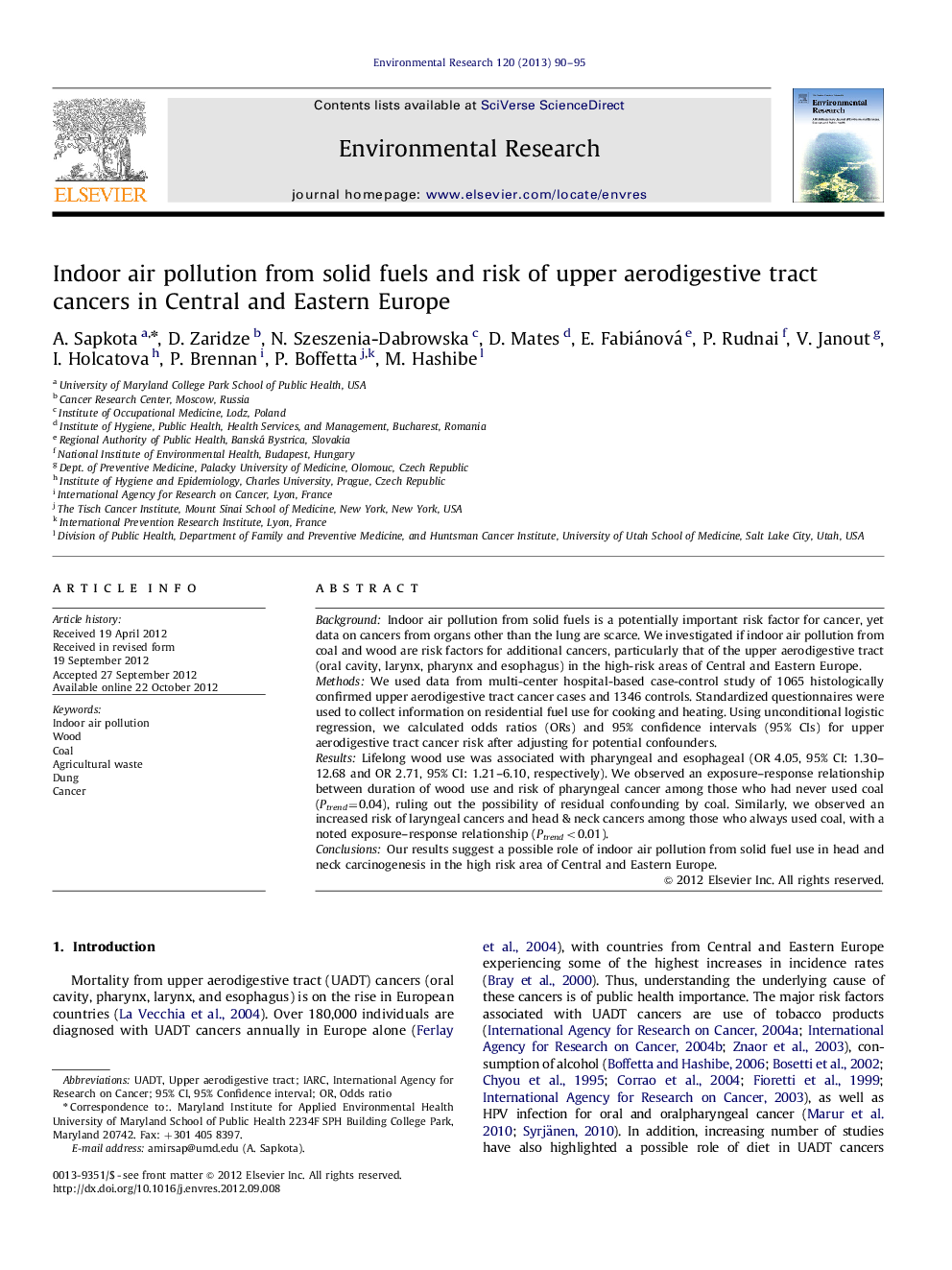| Article ID | Journal | Published Year | Pages | File Type |
|---|---|---|---|---|
| 4469906 | Environmental Research | 2013 | 6 Pages |
BackgroundIndoor air pollution from solid fuels is a potentially important risk factor for cancer, yet data on cancers from organs other than the lung are scarce. We investigated if indoor air pollution from coal and wood are risk factors for additional cancers, particularly that of the upper aerodigestive tract (oral cavity, larynx, pharynx and esophagus) in the high-risk areas of Central and Eastern Europe.MethodsWe used data from multi-center hospital-based case-control study of 1065 histologically confirmed upper aerodigestive tract cancer cases and 1346 controls. Standardized questionnaires were used to collect information on residential fuel use for cooking and heating. Using unconditional logistic regression, we calculated odds ratios (ORs) and 95% confidence intervals (95% CIs) for upper aerodigestive tract cancer risk after adjusting for potential confounders.ResultsLifelong wood use was associated with pharyngeal and esophageal (OR 4.05, 95% CI: 1.30–12.68 and OR 2.71, 95% CI: 1.21–6.10, respectively). We observed an exposure–response relationship between duration of wood use and risk of pharyngeal cancer among those who had never used coal (Ptrend=0.04), ruling out the possibility of residual confounding by coal. Similarly, we observed an increased risk of laryngeal cancers and head & neck cancers among those who always used coal, with a noted exposure–response relationship (Ptrend<0.01).ConclusionsOur results suggest a possible role of indoor air pollution from solid fuel use in head and neck carcinogenesis in the high risk area of Central and Eastern Europe.
► Wood use is associated with pharyngeal cancer risk. ► Risk observed among individuals who had never used coal. ► Indoor air pollution from solid fuel may be a risk factor for head and neck cancer.
